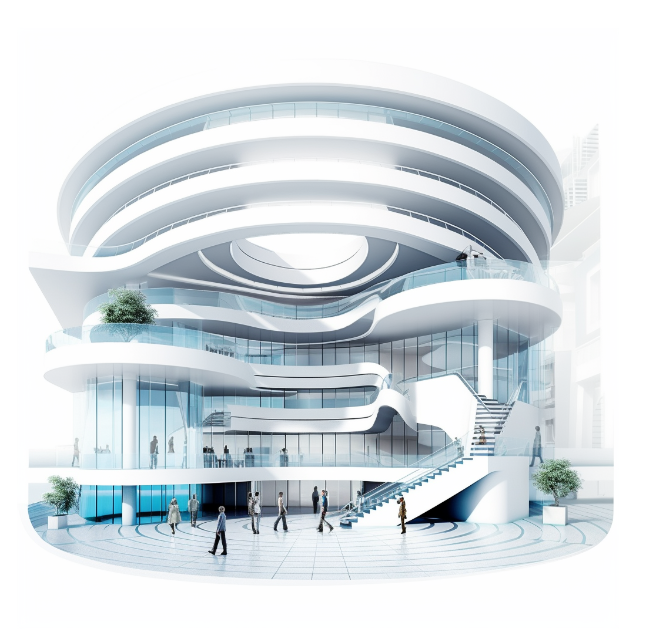- Home
- Building Design Trends to Watch in 2023 and Beyond
Building Design Trends to Watch in 2023 and Beyond

Building design is an ever-evolving artform. Architects and designers are constantly innovating to address society’s changing needs and priorities. Today, some major focuses are on sustainability, human health, flexibility, technology integration and accessibility.
In the coming years, we’ll see net zero emissions, biophilic design, adaptable spaces, smart automation and universal accessibility become standard. It’s an inspiring time in the field! Those shaping our built world have tremendous power to create healthier, more sustainable, equitable and vibrant communities.
This article will dive into 10 trends at the leading edge. Understanding where things are headed can help firms position themselves at the forefront of the industry. Let’s look at what the buildings of tomorrow have in store.
Sustainability
Sustainability remains one of the biggest drivers reshaping architecture. Climate change is urgently demanding more eco-friendly buildings. Many cities now require all new construction to produce net zero carbon by 2030. Architecture firms are also self-imposing net zero goals.
To get there, projects will minimise energy needs with passive design. Strategies like airtight envelopes, top insulation, energy recovery ventilation, and high-performance windows will become standard. On-site renewable power and electric heating/cooling will help slash emissions.
Regenerative design goes even further. It uses buildings to actively heal the environment through water recycling, green roofs, urban farms, renewable energy generation and carbon sequestration. Imagine office parks absorbing more carbon than they emit!
Wellness
Designing for health is essential. People spend over 90% of time indoors. Our built environments can either enhance or harm wellbeing. Expect wellness certifications like the WELL Building Standard to become as important as LEED.
Strategies will include active design prompting movement, nature integration to reduce stress, optimal lighting, air quality and acoustics. The benefits to occupant productivity and satisfaction are too big to ignore. It’s time to make people’s needs a top priority.
Flexibility
Adaptable, multipurpose spaces allow buildings to accommodate different uses over time. As needs change, rooms can be reconfigured via moveable walls, modular interiors, raised floors and more.
Imagine an office morphing from open-plan to private rooms. A classroom becoming a yoga studio. A bedroom transforming into a home office. Buildings will enable these shifts through flexibility.
This adaptability also enables more customization upfront for users’ specific requirements. Construction can focus on unique needs rather than standardised spaces.
Smart Technology
The Internet of Things and building automation will enable our structures to think, sense and respond. Machine learning optimises systems like lighting and HVAC based on occupancy patterns and user feedback. Alerts inform managers of issues instantly. Voice controls improve accessibility.
Over time, artificial intelligence will allow buildings to self-regulate. Picture an office modifying configurations, equipment and utilities to perfectly balance comfort, productivity and energy use. Our environments will enhance how we live and work in amazing ways!
Biophilic Design
Biophilic design connects people to nature’s genius within buildings. Elements like living walls, green facades, botanical patterns and access to light and air make us healthier and happier. Our brains and bodies prosper from integrating nature wherever we abide.
Imagine strolling a rooftop garden above a bustling city. Having foliage glow through stained glass walls. Walking on textured stone under skylights in a mall. Biophilic architecture nourishes our very souls!
Modular Construction
Modular building shrinks construction’s footprint by assembling parts created off-site. This also enables tighter quality control. Modules get built rapidly in a factory then joined on location. Projects come together faster, cheaper and greener this way.
Modules can also be reconfigured or expanded far more easily than conventional structures. Buildings gain flexibility and longevity, reducing waste. Modular allows limitless customization too. It’s revolutionising how we construct for the better!
Natural Materials
Sustainable design recognizes that the greenest buildings use the earth itself. Wood, straw bales, adobe, rammed earth, bamboo and more create closer connections. Minimal processing reduces embodied energy. Local and reclaimed materials lower transport impacts. Nature knows best!
Advances in mass timber allow wood high-rises. New natural insulating materials replace petrochemical foams. Natural linoleum substitutes vinyl. The possibilities to limit our footprint are thrilling.
Accessibility
Inclusive, equitable design must be inherent, not an afterthought. All people, regardless of age and ability, deserve buildings welcoming them with dignity. Universal design principles like zero-step entries, wide halls and doorways, reachable controls, braille signage and wayfinding technology enable this.
Neurodiversity and mental health also influence needs. Buildings reduce sensory overload through natural light, muted acoustics, soft textures and calming hues make public spaces usable for more.
Accessibility allows the built environment to empower everyone. This ethical imperative creates better places serving all.
Conclusion
The potential for architecture to drive positive change has never been greater. By embracing sustainability, wellness, flexibility, technology, nature, inclusiveness and more, our buildings can uplift people and the planet.
Trends like net zero energy, biophilic design, modular construction and universal accessibility point the way forward. It’s an exciting time! Let’s collaborate to build a vibrant world fostering health, community and environmental regeneration.
The future beckons. Green, smart, accessible, inspiring structures enriching lives await. Will you answer the call and pave the way? The power is in our hands. Let’s build a brighter tomorrow.
Author Bio
Wimgo
Other post in Categeory
© 2022 Wimgo, Inc. | All rights reserved.